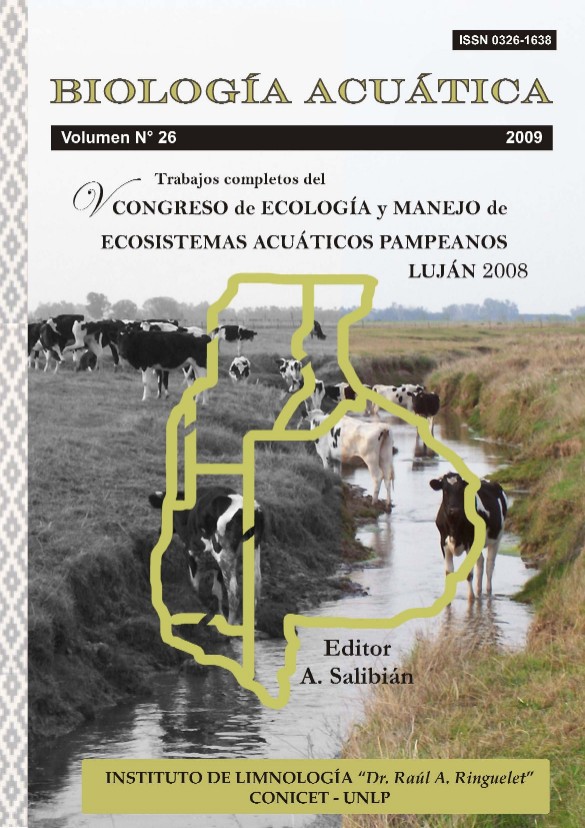Propuestas de alternativas de gestión de una laguna suburbana
Keywords:
suburban shallow lakes, environmental diagnosis, environmental managementAbstract
A 7 ha shallow water body is located in an urban park in the city of 9 de Julio, Province of Buenos Aires, Argentina. Pluvial water drainage maintains its hydrometric level which is regulated by a spillway. Since 2004, fishing and swimming have been forbidden. In 2008, the government of the city requested the University (UNCPBA) to make a rapid diagnosis of the state of the shallow lake. The objective was to present management alternatives taking into account the structure and functioning of the shallow lake, through sampling as well as from existing information. The water is characterized by low ionic charge. The system is eutrophic. Phytoplankton is co-dominated by chlorophyte and euglenophyte algae. Macrophytes are irrelevant. Macrozooplankton exhibited very high densities. Five fish species were captured, all of which have zooplankton and detritus as primary resources. Sediments tend to accumulate, since nutrients and organic matter cause the saturation of the basin. The main proposals (including alternative, complementary, or sequential actions) are intended to revaluate the public space through its use, introducing local identity and a sense of belonging. Some of the proposed activities are: to regulate the flow, widen the wavaciarterbed, sow macrophytes and redirect pluvial discharges; to vacate the place for the extraction of sediment; to allow the practice of recreational fishing; to introduce fishes of sporting interest; to gather leaves and keep clean the surrounding of the shallow lake and neighboring streets; to install a geyser; to monitor the microbial flora; to make analysis of lead and hydrocarbon contents; to establish footpaths and points of reflection and observation of Nature.





















